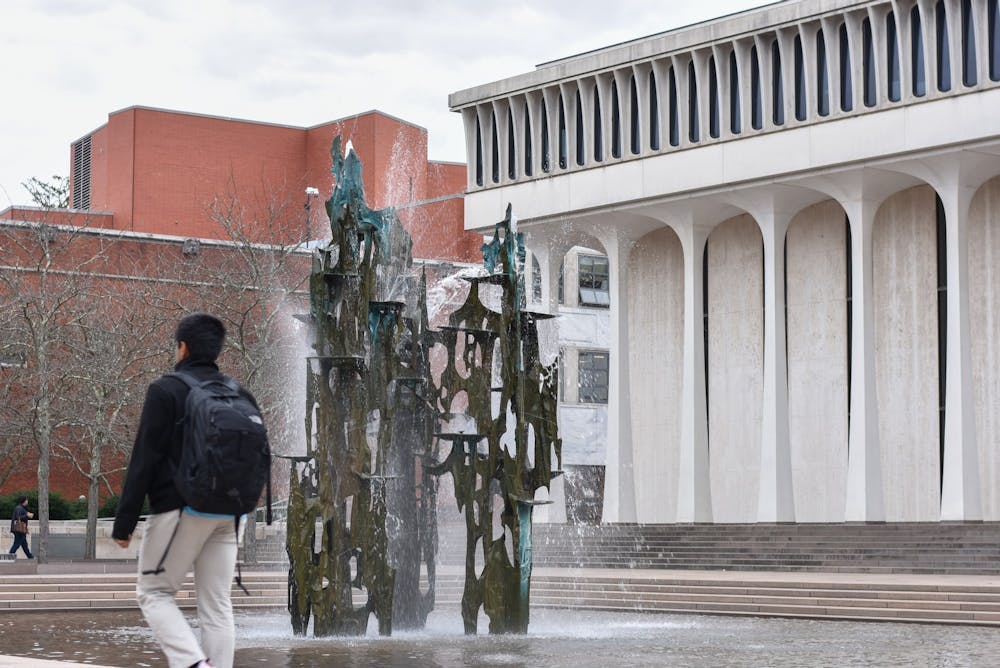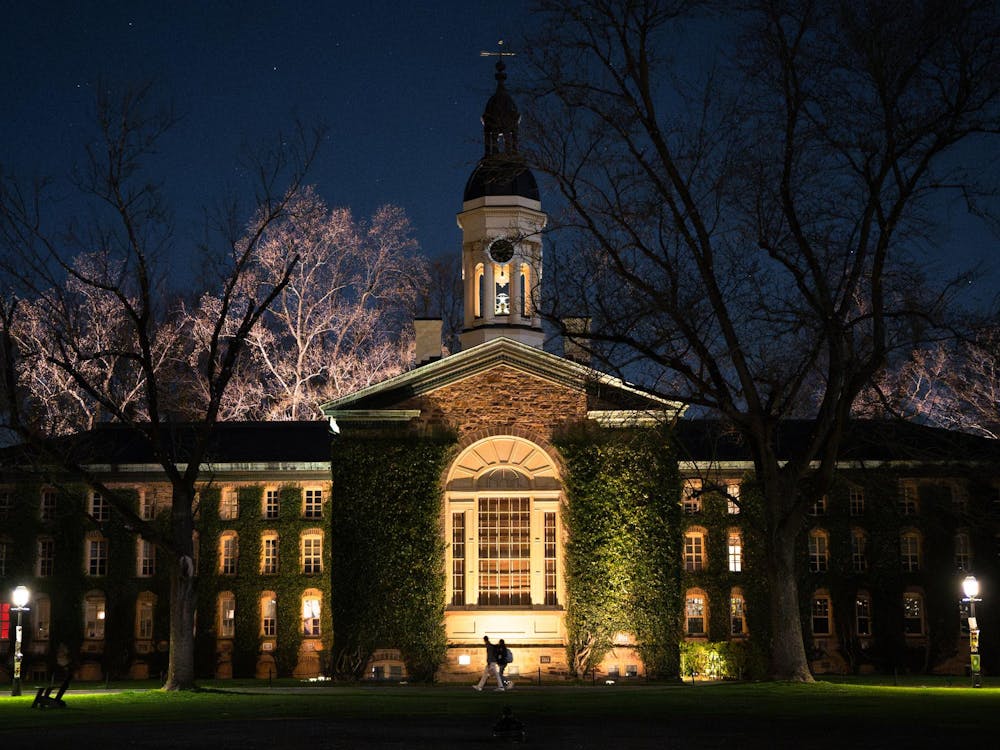The following is a guest contribution and reflects the author’s views alone. For information on how to submit an article to the Opinion Section, click here.
In the last few weeks, Princeton Graduate Student United (PGSU) has been collecting signatures for unionizing with United Electrical, Radio and Machine Workers of America (UE). Yet as I compared ratified and historical contracts from graduate student unions at similar universities (Harvard, Columbia, NYU, the recently ratified UE-affiliated University of New Mexico, and the currently negotiating MIT union), I found that there is no precedent that suggests that PGSU can achieve what it has promised. In fact, unionization may lower expected stipend growth in the long run and use members as pawns in political agendas. The benefits that a union can actually achieve are marginal, at best.
Grievance procedures and housing resources
Many of PGSU’s promises, if pushed for by the union, will not be a significant improvement on our current benefits. A key example of this are grievance procedures, which PGSU has said the University should improve. While all the past ratified contracts from other universities include grievance procedures, their scopes are narrow and limited. Unions’ procedures typically require grievances to be submitted within 15 business days of the incident, 30 days for Harvard. Even without the union, the University has avenues that allow students to file complaints regarding harassment or discrimination on broader topics without any statute of limitation.
Additionally, in Harvard’s grievance procedure, there is no explicit requirement for a union representative to be impartial or confidential, which may make the system ill-equipped to handle some sensitive complaints. Harvard's contract also stipulated that sexual harassment be resolved through the Title IX office, which is already the current procedure in Princeton. If the Princeton procedure follows the precedent, it would create a system inferior to the current one. Currently, students in Princeton seeking neutral arbitration can already seek help from the Ombuds office which is explicitly bound to be impartial by international agreement and is a confidential resource.
Furthermore, on the subject of housing, none of the ratified contracts at other universities guarantee housing for all graduate workers. The most extensive provision is Harvard’s, which removed payment processing fees for university-owned housing. The precedent may be replicated: according to a memo sent by Dean of the Graduate School Rodney Priestley, “housing is not subject to collective bargaining.” In a recent article in The Daily Princetonian, PGSU and its supporters framed the housing problem to be more severe than it is in reality by using the cost of one bedroom and the academic year, instead of the annual stipend rate.
As most graduate students live in two-bedroom apartments or townhouses, the actual percentage of the rent to income for on-campus housing is at most 25 percent, less than the average percentage of income spent on rent in the United States, estimated to be at most 30 percent. Of course, there are housing challenges, especially when it comes to availability. However, as addressed by the dean, the University is trying to resolve shortages by building the Meadows apartment complex to have enough units for all graduate students.
Increasing Ph.D. stipends
Princeton’s stipend is already better than many other programs. Based on the data for Biology Ph.D. stipends, Princeton currently has the highest ratio and surplus of stipends to the living wage. We are currently paid 20 percent higher than the cost of living in the area. This value is before the 5 percent increase announced to the entire graduate class this week. Based on the last nine years of information, Princeton increases stipends annually by about 3 percent, except for the last two years at 25 and 5 percent. The rate of increase is the same as the current negotiated rate by the MIT union and is equal to or higher than the ratified rate for NYU (2.5 percent), Harvard (3 percent), and Columbia (3 percent).
In the long run, a graduate student union can be inefficient in increasing graduate stipends. In the case of the currently striking Temple University graduate student union, the wage for Science graduate students grew from $13,400 per year in the 2002–2003 academic year (AY2002–2003) to $20,840 in AY2020–2021. The increase is equivalent to an average of 2.5 percent annual increase over 18 years, lower than Princeton's rate. An agreement in NYU produced lower growth as well: from 2016 to 2020 annual increases for research assistants ranged between 2.25 and 2.5 percent.
There is also an incentive for Princeton to give higher salaries to graduate students on its own. During the graduate application process, competitive students will receive several acceptance letters. A high salary may incentivize a student to choose Princeton. Other institutions without graduate student unions already increased graduate salaries annually, whether for this or other reasons. In the case of Cornell with its graduate students voting against unionization in 2017, the stipend increased by an average of 4.5 percent annually from AY2019–2020 to AY2023–2024, higher than Harvard, whose graduate students voted to unionize in 2018, where stipends increased at a 3.7 percent average annual rate from the ratified contracts. Agreeing on collective bargaining means that the rate of stipend is determined far in advance, typically for 3 to 6 years, which can be inflexible in the face of economic uncertainty.
International students, work standards, and union dues

PGSU’s promises for international students are either largely unattainable or already in place. For example, Curricular Practical Training (CPT) for every department would mean that every department would have to modify its curriculum to acknowledge that external work experience is a part of your graduate school education — this demand is academic by nature and therefore cannot be part of the bargaining process. Other PGSU proposals already exist at Princeton: a clear and safe work environment is handled by the EHS office, while contingency funds are available through departments and the graduate school.
There are other reasons to be wary of the promised benefits. The union due, 1.44 percent of our gross salary, is compulsory, meaning that every student will have to pay between $689 to $778 next year, dwarfing the current Graduate Student Government (GSG) due (which is $25). Collectively, the students will pay about two million dollars per year, with 2/3 of it going to the national UE based on the language in Article 15 of UE constitution. Yet, in addition to these monetary costs, there are other downsides that PGSU failed to address satisfyingly during the last GSG meeting.
The political nature of a union
A union also presents new challenges: namely, labor unions are political by nature. All the established graduate unions have historically provided endorsements, whether it is for or against individuals or movements. Typically these endorsements reflect the view of national or local unions and are made by the elected leadership committees or through voted resolution. As a student in the plasma physics program, I found that alliance with UE and its political stances would be detrimental to my future. UE is both anti-nuclear energy and anti-defense spending, two subjects that are directly related to my field of study and that I have strong opinions about. In addition, UE strongly endorses the Boycott, Divestment, and Sanctions (BDS) movement against Israel which will prevent collaboration with Israeli institutions or companies that do business in Israel, including General Electric which is the leading private company for plasma physics research.
The political stances that UE supports are not compatible with my own, but the compulsory union due means that I would have to donate hundreds of dollars which would go against causes that I care about. Perhaps the political nature of unions is what Princeton is most afraid of. If PGSU becomes an official union representing all the graduate students, when they endorse a cause, the endorsement may suggest that all graduate students support the cause. For example, when the NYU graduate union endorsed the BDS movement in a low voter turnout poll, the president of NYU had to make a statement denouncing BDS.
A future with a union
If PGSU’s claim that they have obtained support from a majority of grad students is true, the student body must take action to ensure that the union will be held accountable. It needs to be pointed out that as a member of the union, you are generally not allowed to voice a dissenting opinion encouraging group secession from the national union and the establishment of a new union (per Section D, Article 24 of the UE constitution). Disbanding a local union is harder than organizing one. A decertification election requires 30 percent of members to petition and can only be done three years after an agreement is ratified. The small time window between contracts and the inertia of graduate student movements practically guarantees that a graduate union will be a permanent fixture.
In the case of a successful unionization vote, we should demand that the formation of a union be open-shop, as is the case for the Harvard graduate student union. An open-shop union means that students can elect to not join the union and not pay any dues. Currently, PGSU is pursuing the agency-shop model, where workers pay the due no matter if they want to be politically active or not. Contrary to the information spread by PGSU in the GSG Slack channel, there is no law preventing an open-shop union.
If PGSU’s goal is to improve graduate student conditions, GSG and its committees are more than enough. As a GSG representative for my program, I am troubled by how underutilized GSG currently is given how powerful it can be. Until 2001, GSG, not Princeton, was the provider of the dental insurance plan. While the GSG itself cannot strong-arm Princeton to set our salary, it can elect a representative to the priorities committee to give a recommendation to the board of trustees.
This is not the first time PGSU tried to unionize. In 2017, PGSU’s unionization effort failed spectacularly with infighting and criticism of their positions and actions. The current iteration of PGSU does not show any improvement. Their last petition on remote learning was not popular and can no longer be found on their platform. PGSU’s current blitz campaign focuses on antagonizing the University and giving students false promises without being backed by any hard precedent.
Their rampant misinformation and omittance of the downsides of unionization are at best ignorant if not malicious. PGSU’s recent false claim that graduate student stipends are being increased by $5000 highlighted how the movement is impulsive and uncalculated.
To quote another student referencing PGSU’s recent activism, “talking about unionizing seems like it might be a more effective strategy than actually unionizing.”
Himawan Winarto ’18 GS is a fifth-year in the Program in Plasma Physics and the GSG representative for the department. Hima grew up in Malang, Indonesia before moving to Princeton and graduating in 2018. He can be reached at hwinarto@princeton.edu.








